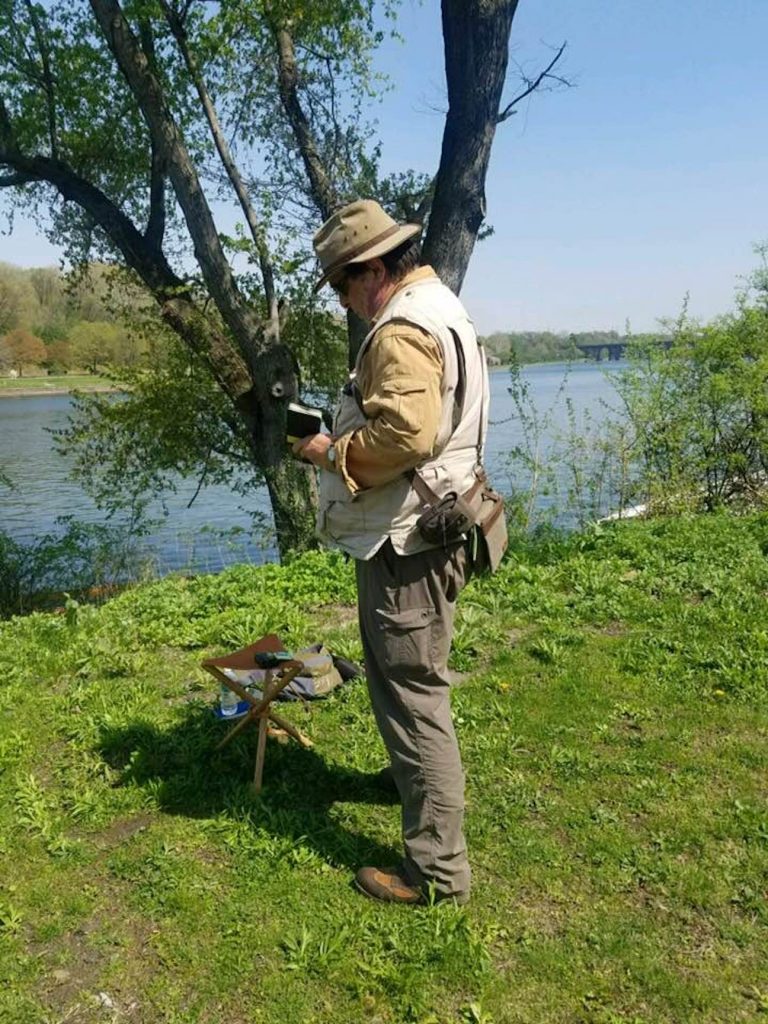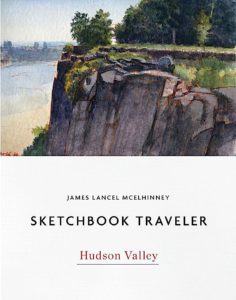Despite our temporary confinement, we can still celebrate travel. These quotidian posts are shared as messages of hope, that when this crisis ends, we will discover outdoors, wonders we had taken for granted, drawing strength, wisdom and compassion from deeper engagements with nature.

Dragon-Boat Dock. May 3, 2018. Schuylkill River Sketchbook.
Exploring the banks of the Schuylkill River in 2018, between the mouth of Wissahickon Creek and Fairmount Water-Works, I filled a sketchbook with journal-paintings. Later that year these would become a limited-edition suite of prints, and the centerpiece of the installation O.T.W. On the River, at Independence Seaport Museum in Philadelphia. The installation also included works by living artists Patrick Connors, Tom Judd, Stacy Levy, Deirdre Murphy, Jacob Rivkin and Joseph Sweeney and historic artists Edmund Darch Lewis, Johann Georg Martini and Granville Perkins.
Note on the image:
The Philadelphia Dragon Boat Association celebrates an ancient paddling tradition that began in South China, more than 2500 years ago. The sport was revived in Hong Kong in 1976. Within a few years, dragon-boats appeared on the Schuylkill River. The Philadelphia club has since won numerous international competition. Long, sleek and colorful, dragon-boats are unmistakable. With a crew of twenty-two, paddlers chant with every stroke. The sport has Asian roots, but crews are ethnically diverse. The dock used by the PDBA is located on the west bank, downriver from Columbia Railroad Bridge, near the intersection of Black Road and Martin Luther King Jr. Drive.
Below the bluffs, the floodplain behind the shoreline was once a series of marshes and wetlands, a breeding-grounds for mosquitoes. Deadly outbreaks of Yellow Fever led civic leaders to transform pestilential swamps into broad embankments. The eastern banks were girded with masonry revetments, while the western shore was treated with tender loving neglect. The Outrigger Canoe Club and P.D.B.A. have breathed new life into the wooded and less accessible right bank. Thomas Eakins chose this stretch of shoreline for his painting Max Schmidt in a Single Scull from this stretch of shoreline in 1871, the same year a monument to explorer Alexander von Humboldt by sculptor Frederick Johann Heinrich Drake was installed at the foot of the Pennsylvania Railroad Connecting Railway Bridge, a quarter-mile downstream. Moved from across river to its present location when the bridge was widened in 1912, Humboldt now stands in a grovw of trees behind the Dragon-Boat dock. A prominent member of the rowing community now wants to move the Humboldt monument from its sylvan abode to the campus of Drexel University. One suspects that Humboldt might not rather stay put.

On site near Dragon-Boat Dock.
Photograph by Virginia Baltzell.
(A preview of SKETCHBOOK TRAVELER by James L. McElhinney (c) 2020. Schiffer Publishing).
Copyright James Lancel McElhinney (c) 2020 Texts and images may be reproduced (with proper citation) by permission of the author. To enquire, send a request to editions@needlewatcher.com
